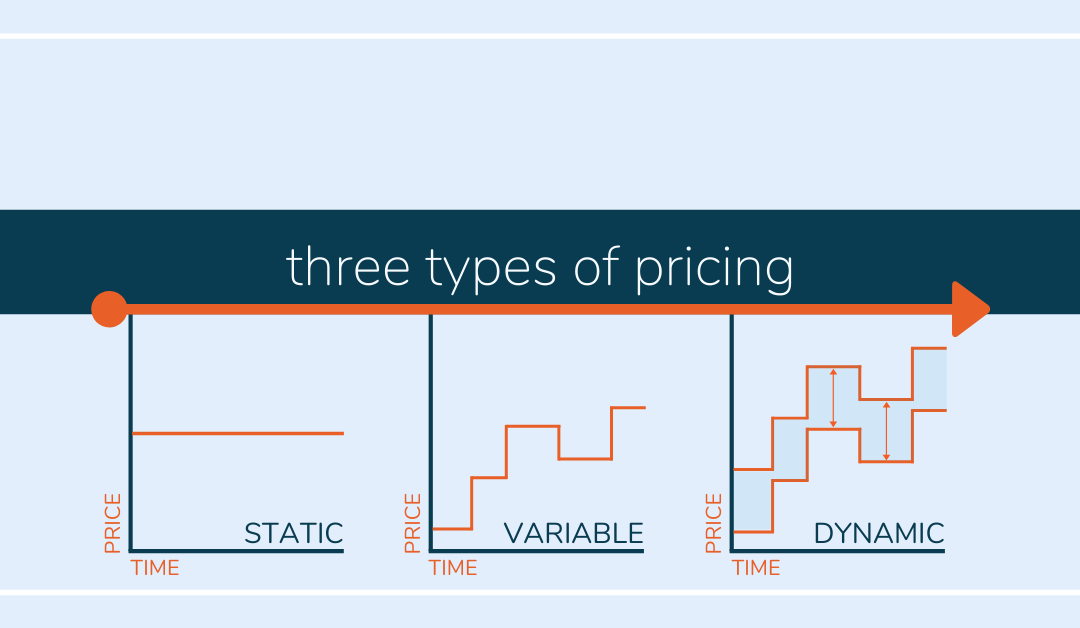As you might have read in a previous article our mission at th!nkpricing is to make sure you have the most up-to-date knowledge on how pricing can make your business more profitable. In this blog series, we want to take a look at why pricing is paramount. And how by changing the classification and pricing of your products you can unlock new revenue. We want to share with you the latest tools and pricing methods that are in use here at th!nkpricing. Previous articles took us on a whistle-stop tour of what a ticket is, modern ticket pricing, and an intro guide to pricing. Now let’s jump into the three key price-setting strategies available to businesses.
static price changes
A static price change is a holistic change of all price points at once with no further changes planned for the future.
Static pricing is the most frequently used pricing strategy but it may not be the best for your business. Often it occurs when a business is forced to reevaluate its prices due to unexpected market conditions like product cost increases or in the event of a new competitor putting downward pressure on prices.
costs/benefits of static price changes
Many business owners choose static pricing because it simplifies the operational burden of pricing to a once-off process. In addition, B2B customers tend to prefer consistent pricing with no fluctuations, which they will either have to absorb or pass on to their own customers. However, it is not all roses. Static pricing fails to take into account current demand levels or other market factors. And, it can take time to implement, as the required data to make the necessary changes can be hard to access. The third negative aspect is the fact that pricing decisions are often subjective, with personal biases creeping into the pricing strategy.
In brief, static price changes are used by businesses who are unfamiliar with more advanced pricing methods and tools. It is undeniably effective for urgent or immediate conditions but it is not tactical or strategic over the long term. It can have an unexpected negative impact on the business as a consequence of failing to implement data-based decision making.
variable price changes
This is a step towards more advanced pricing where pricing is based on an expected change in market conditions or in customer demand. Usually, this happens at set times throughout the year or sales cycle; eg. at the start of the season or at various checkpoints like Christmas, new year etc. These price changes tend to happen when a business is forced to rethink its prices due to unexpected market conditions like an increase in product costs or the arrival of a new competitor.
pros and cons of variable price changes
One great thing about this type of price change is the level of flexibility and consistency brought about by only changing prices at set times throughout the year. Added to that, is the reduction in operational input to predetermined times in the year. Indeed, it is often a winner with customers as they accept seasonal changes more easily than changes derived from more complex models. That being said, variable price changes still require clear customer communication or it can often fail if the tone of voice is unempathetic. And it still misses out on demand and revenue opportunities.
We mostly observe businesses with a more sophisticated understanding of pricing administering this kind of pricing strategy.
dynamic price changes
Based on the buying patterns of end customers dynamic price changes reflect a more flexible approach to price differentiation. It uses both real-time data and deploys sophisticated demand prediction models to make live price adjustments. Here instant changes in market conditions precipitate maximum realization of demand and revenue.
why choose dynamic pricing?
Businesses that opt for dynamic price changes make real time use of market conditions and sales data to determine the right price at the right time. Along with unleashing an optimised return on investment with increased revenue and demand. This allows you to provide the best option to all customer segments. However, dynamic pricing requires you to provide a clear explanation and marketing message to avoid any confusion. And, it also requires a larger upfront investment and or commitment to pricing.
Thus this method of pricing is most often used by businesses primed for sophisticated pricing that matches the buying patterns of their consumers.
In brief, with many businesses opting to deploy a static or variable pricing strategy, there is a huge opportunity lost to capitalise on changing market dynamics and fluctuating customer demand. However, despite the fact that dynamic pricing is the hallmark of a sophisticated sales department there is a way to ensure that your business captures the right margin at the right time and we will discuss that in an upcoming article.

